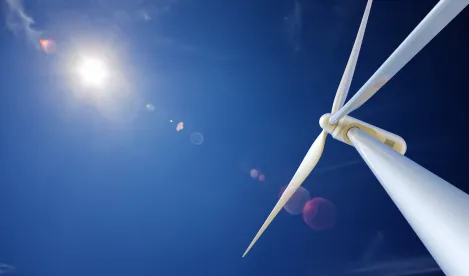To date, offshore wind development in the U.S. has focused on the Atlantic Coast, particularly the Northeast and Mid-Atlantic regions. But the Biden Administration has ambitious plans to expand offshore wind to the Gulf of Mexico—and those plans are beginning to take shape.
Federal officials are now soliciting interest from offshore wind developers. Such development remains years away from actually producing energy, but the current administration clearly wants the Gulf of Mexico, long a stronghold for oil and natural gas production, to join the clean energy movement. And, based on what we know about necessary lead times required for off-shore development generally, interested stakeholders should step up to the table now.
Federal Government Announces First Steps Toward Offshore Development in the Gulf
In June 2021, the Bureau of Ocean Energy Management (BOEM) published a Request for Interest (RFI) in the Federal Register to assess interest in offshore wind on the Gulf of Mexico Outer Continental Shelf. The area in question would be offshore of Alabama, Louisiana, Mississippi and Texas. The RFI opens a 45-day comment period to gauge potential interest in such offshore wind development, and this feedback will help BOEM determine its next steps.
“The Gulf of Mexico has decades of offshore energy development expertise” said Mike Celata, regional director of BOEM’s Gulf of Mexico office in New Orleans, who indicated that the June announcement represents the government’s first real effort to harness that expertise and apply it to the renewable energy sector. But this is just the first step. Before any areas may be leased or developed, BOEM will need to conduct multiple and extensive environmental assessments and then run a competitive leasing process before any lease may be signed.
Assuming the stars align and Gulf development moves forward, BOEM would be in position to greatly expand the amount of wind energy capacity available in the U.S. BOEM currently has 17 commercial offshore wind leases in the Atlantic, which comprise 1.7 million acres in the Outer Continental Shelf. A 2016 National Renewable Energy Laboratory study determined that the Gulf of Mexico accounts for approximately 15% of the gross offshore wind energy potential in the United States and 25% of the technical offshore wind energy potential. Opening up the Gulf to offshore wind development will go far in assisting the Administration to achieve its stated goal of deploying 30 gigawatts (GW) of offshore wind by 2030.
As further support for moving forward with the recent RFI, a 2020 National Renewable Energy Laboratory/BOEM study projected that a 600 MW offshore wind farm in the Gulf of Mexico would create nearly 4,500 jobs and $445 million in GDP during construction, and 150 jobs and $14 million annual GDP in operation – a beacon of light for companies and individuals livelihood is being threatened by the continual push for an energy transition.
“Based on the findings from the first phase, during which all renewable energy sources in the Gulf of Mexico were evaluated, the NREL determined that offshore wind has the highest potential to deliver utility scale electricity from ocean-based renewable energy in the Gulf of Mexico,” the report’s authors wrote. However, the NREL/BOEM report was not all roses.
The report did identify potential problems for offshore wind development in the Gulf of Mexico, including softer soil, slower wind speed and damaging hurricanes. But, the report projects that these obstacles can be overcome and the Gulf can be a productive source of wind-generated electricity in the not-too-distant future. Assuming development costs continue to drop and new technology emerges, the report projects development in the Gulf will be viable by 2030. It’s quite possible, based on recent technology developments observed in Europe and around the world, that development may become a reality much sooner than that. And, the Gulf has a number of natural advantages compared to the Atlantic, such as warmer, shallower waters and smaller waves, and it is home to an extensive offshore energy industry infrastructure, which can be used to support offshore wind as well.
In addition to the federal effort, Louisiana convened a Climate Initiatives Task Force in November 2020 and Gov. John Bel Edwards noted that renewable energy development in the Gulf would be a key strategy. Other Gulf states have yet to be as proactive, but it certainly is possible that the BOEM efforts will spur them to action. Additionally, a bipartisan group in the U.S. Senate, including lawmakers from Gulf states, introduced the Reinvesting in Shoreline Economies and Ecosystems, or RISEE, Act in June 2021. This legislation would give coastal states increased revenue from offshore energy production, including offshore wind – providing yet another incentive for the Gulf Coast States to start developing programs that encourage offshore wind growth.
How Traditional Energy Fits into Offshore Wind Development
On first glance, one might think the push to develop offshore wind energy would be perceived as a threat by oil and gas producers. But many enterprising energy companies believe that offshore wind development complements their traditional lines of operations, rather than threatening them. They also see clean energy as a way to grow and expand their businesses.
NREL researcher Walt Musial, the lead author of the aforementioned report, said, “As we seek to diversify the U.S. energy supply using ocean renewable resources, we are finding that the existing oil and gas industries in the Gulf are able to leverage their vast ocean-based capabilities to expand their businesses and capitalize on these new energy opportunities.”
Companies already producing oil and gas in the Gulf of Mexico have a head start on developing offshore wind energy in the region. They have significant infrastructure in place, much of which can be repurposed for offshore energy production. In addition, oil and gas companies have access to the technical know-how needed to operate offshore wind farms.
Any energy development, including offshore wind, obviously requires extensive due diligence and careful attention to a wide range of regulatory requirements. For example, the environmental review process for offshore wind projects include coordination with the Army Corp of Engineers (USACE) and the US Coast Guard, consultations with the Fish and Wildlife Service (USFWS) and National Marine and Fisheries Service (NMFS) and approvals from the United States Environmental Protection Agency (USEPA). Each state also has its own approval and regulatory process for offshore wind development.
However, the Biden Administration, unlike its predecessor, is actively encouraging offshore wind energy development and seems likely to work with companies seeking to develop projects in the Gulf of Mexico. Likewise, Louisiana, in particular, is taking a similarly proactive approach to offshore wind development, and other states may follow suit.
For companies interested in developing offshore wind projects in the Gulf of Mexico, they may find the wind is at their backs in the current political and regulatory climate. The RFI is the first important step in making this happen, and the industry eagerly awaits the results of this report.




 />i
/>i
